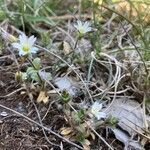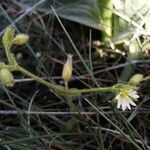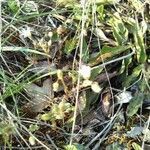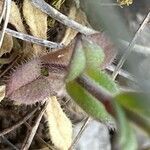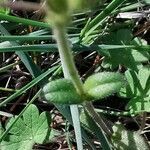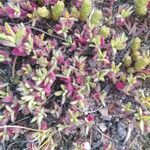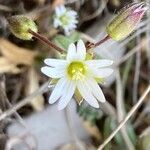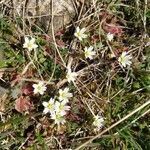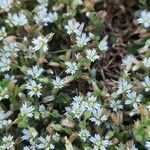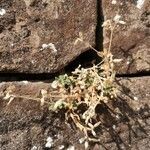Herb, annual, with slender tap root, and glandular and eglandular hairs. Stems erect or ascending, diffusely branched, 2–22 cm high. Basal leaves oblanceolate-spathulate, sessile or with petioles to 12 mm long. Cauline leaves sessile, linear-lanceolate to ovate-oblong, 4–16 mm long, 2–9 mm wide. Inflorescence lax to rather dense, few-flowered; all bracts herbaceous or upper with very narrow, scarious margins. Flowers 5-merous, 3–7 mm diam.; pedicel equal to or longer than capsule and curved just below capsule. Calyx glandular-pilose, with a few eglandular hairs above. Sepals 4–5 mm long, oblong-lanceolate, obtuse to acute, with broad, scarious margins. Petals 65–100% length of sepals, 20–25% bifid. Styles 5. Capsule 5–8 (–10) mm long, narrowly cylindrical, straight to distinctly curved. Seeds 0.4–0.7 mm diam., pale brown to chestnut brown, rather coarsely tuberculate.
Much like no. 8 [Cerastium semidecandrum L.]; scarious margins and tips of the bracts shorter and less conspicuous; pedicels ± erect; pet equaling or slightly surpassing the sep; notched 1–1.5 mm; seeds minutely papillate; 2n=72+. European weed, casually intr. with us, as in N.J., Md., Va., Ill., Mich., and Ont. Ours is var. pumilum.
